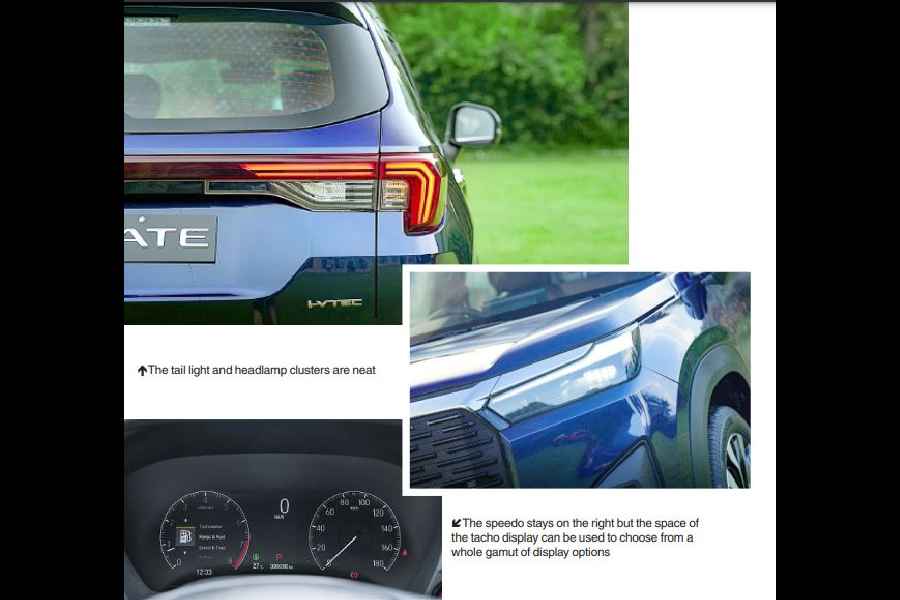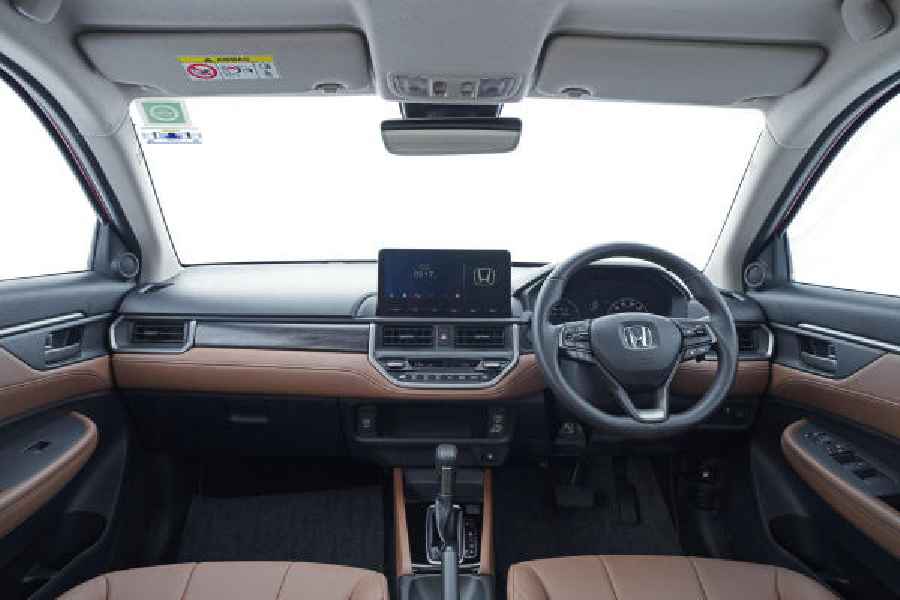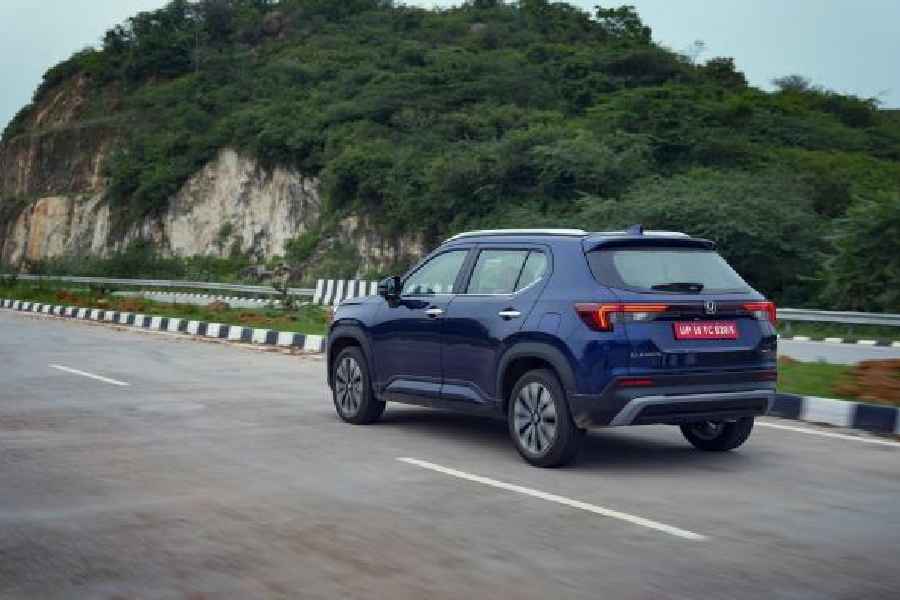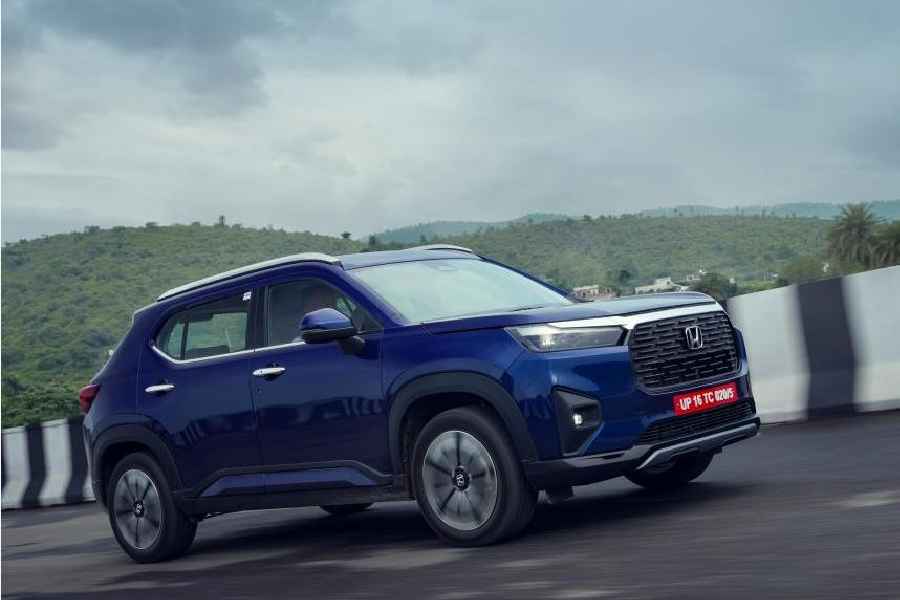If ever a vehicle was tasked with the brief of establishing its brand in one of the toughest but growing, segments of the Indian automotive market, Honda’s new Elevate is it.
Honda, which, till the Elevate arrived on the scene, has been down to just two models, the City and Amaze sedans, has been missing from the all the utility vehicle (UV) segments, which together currently comprise as much as half the total passenger vehicle sales in the country and the demand for them, particularly SUVs, remains as strong as ever while sedans, hatchbacks and the rest are not seeing any great demand-pull any more.
It is against this backdrop that the Elevate enters the market. It will have to garner enough numbers to establish Honda in this segment that has well-entrenched players and, thereby, give Honda enough of an impetus to bring it back into the thick of the market. Honda invited us to drive the Elevate before it hits the market to get a feel of the vehicle. Expectedly, we drove the model in its top trim. And while it is bringing both a manual and a CVT (constantly variable transmission) automatic, we could drive only the manual version. Hence, here are our first impressions of that SUV.
THE EXTERIORS
When one sees the Elevate for the first time in metal, the first thing that strikes is how square it is. Unlike the company’s past vehicles like the CR-V or WR-V, which sported a lot of curved and slopy lines, this one looks to have been designed with rulers and set squares. It’s a very Tonka Toy approach to the Elevate’s design that looks inspired by American SUVs. Broad-shouldered, high-riding — ground clearance is a pretty awesome 220mm — and with a planted stance it looks rather purposeful in the way Indian sport-ute buyers seem to want them.

That look has been further accentuated by a straight belt line and tail lights that kind of define something like a broad shoulder. There is a certain neatness to the overall design that could be refreshing to buyers used to seeing lots of cuts and creases on cars and SUVs. Honda has thinned down its signature chrome bar over the grille even further and used smaller headlamp clusters to highlight the heft of the grille it seems. The Elevate rides on 17-inch alloys but the wheel wells are large and could even do with an upsize possibly. The Elevate has a visual appeal that arises from being purposeful.
THE INTERIORS
The simple straight-line outer theme continues inside the Elevate as well. The dash is the biggest example of it. It does look a tad simple though, now that we have grown accustomed to seeing large infotainment screens going across. That said, the two-part affair here with one in front of the driver and one in the middle might actually suffice to do the job quite well and keep things uncluttered without features that we will never use. The leather and wood finish looks good though and seems durable.
We aren’t geat fans of moving every control to a touchscreen and find hard buttons for oft-used controls easier to operate. So it was good to see that Honda has retained the ones for things like the air-conditioner and some more. It could do with a couple of USB-C ports though.
There is much going for the cabin, which is spacious, and the seats are generous. They do not get the cooling function though, but are well-bolstered and should be comfortable on longer drives as well. The ergonomics for the driver are pat in a predictably Honda fashion and the SUV just fits the driver once he has found a driving position. It also comes with a sunroof, though not a panoramic one that tends to trap more heat inside the car on hot days, although they are very popular.

The dashboard with its smallish by current standards infotainment screen and straight lines looks a tad dated, but there is a sense of quality about the wood and leather
ON THE ROAD
This is where the Elevate excels and expectedly so. Honda has cracked the suspension puzzle for cars sold in India and this one is no exception. It rides very well indeed and swallows up broken bits like it was born to do so. And for an SUV that stands 220mm off the ground, it changes direction very well indeed, with very little body roll and full confidence. Not once did we feel that it would stray off the line. It comes with a very useful button at the end of the right steering column stalk. Press it and a camera on the left ORVM projects an image of what’s on the left of the car on the central screen and there is no blind spot. Very clever indeed and useful in a country where vehicles, particularly two-wheelers, try to overtake on the left even after a left-turn indicator has been switched on.

The lines are clean and simple and the tail lights are designed to emphasise the width of the vehicle
The 1.5-litre naturally aspired engine is the same as that in the Honda City. With a heavier weight it has to work harder and in the manual that we drove it needs frequent downshifts to keep the power flowing. The engine is best at revs of under 4,000rpm or a bit lower since the noise level rises significantly thereafter. In true Honda tradition, the manual gearbox is light and a delight to use. So, we dealt with the downshifting without botheration.Around Udaipur, where we were driving the Elevate, it was fun to gun it up the hilly roads. While it does get a tad noisy, that 1.5-litre V-TEC sound isn’t something we dislike.
THE CALL
Honda’s Elevate comes with the qualities that make Honda what it is in India. The ride is great and so is the handling. The engine and gearbox are smooth to use and controls are light. The ergonomics are spot on. So, the Elevate will do the job of ferrying people around in comfort, whether they are driving or riding as passengers very well. At the right price, it will be a pretty compelling buy.










